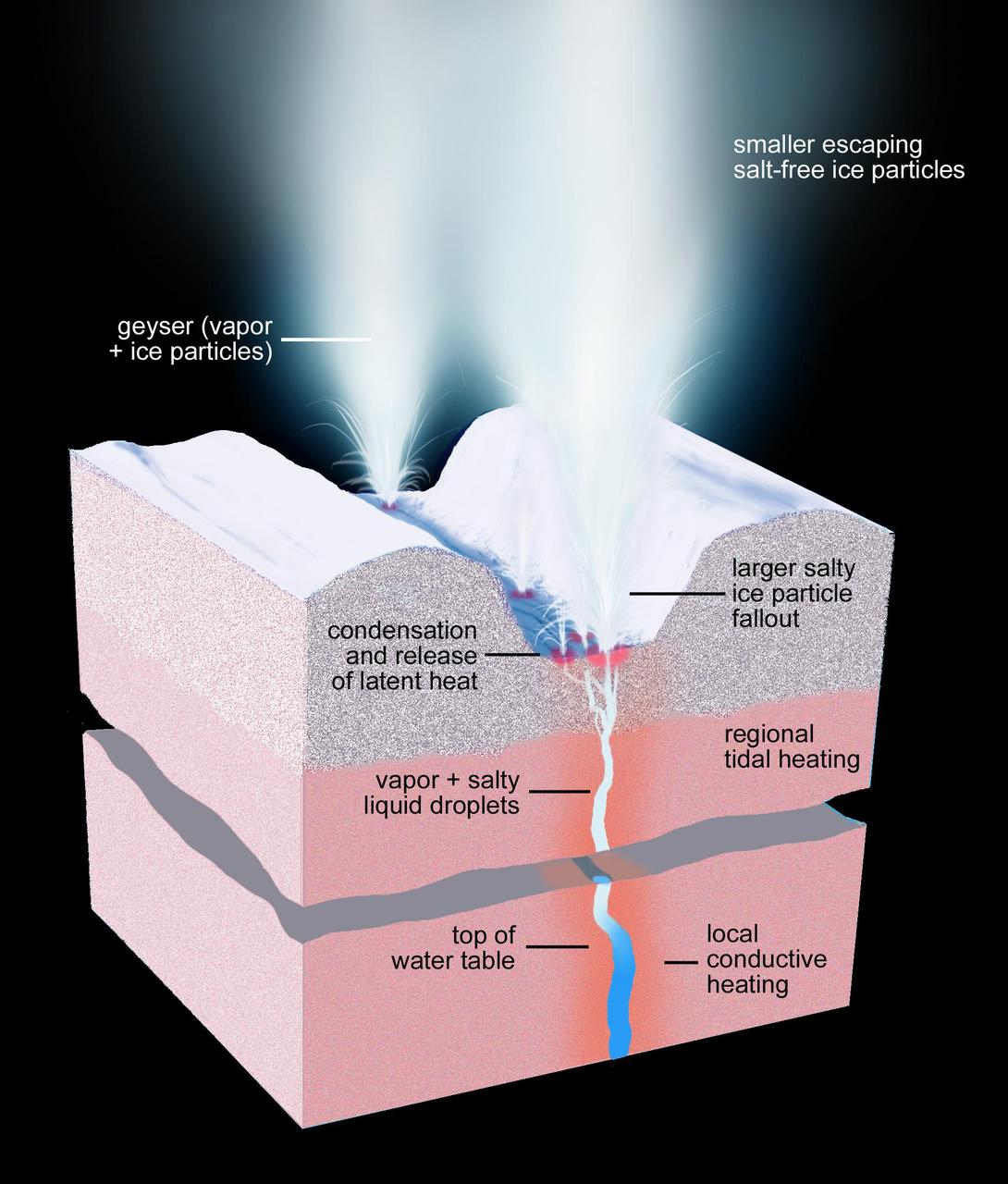NASA has conducted a reassessment of Earth-sized planets around nearby stars and the authors have concluded that 17 of these could resemble some of the moons of Jupiter and Saturn. Rather than being the rocky worlds we have imagined, they probably have icy shells, with liquid oceans beneath. Like the moons Europa and Enceladus, these internal oceans could be suitable homes for life, and sometimes vent to space through geysers. Detecting life in those ice crystal sprays at such a distance may even be possible with telescopes already under construction.
There are many reasons to search for planets around other stars (exoplanets), but the hope of finding somewhere suitable for life is far and away first on the list. Whether you dream of humanity colonizing other star systems, meeting aliens or just being able to study alternative biology, it all relies on planets where life can flourish.
Astrobiologists have assumed this requires two things: roughly Earth-sized planets, rather than Jupiter-like gas giants, and a location in a star’s “habitable zone”. While there has been some debate about habitable zones’ true boundaries, it’s generally considered to be the area with temperatures suitable for liquid water on the planet’s surface. Water, after all, is essential for all life we know, and almost any we can imagine.
Jupiter and Saturn are far outside the Sun’s habitable zone, yet are thought to contain several prospects for life in oceans beneath icy crusts. Moons of exoplanet gas giants would almost certainly provide similar conditions; however, the only two moons we thought we had found around exoplanets are now under question. On the other hand, plenty of planets at similar distances could have internal oceans as well. Dubbed “cold ocean worlds”, Dr Lynnae Quick of NASA’s Goddard Space Flight Center and colleagues set out to identify the closest ones.
Most of the exoplanets we have found lie on the hot side of the habitable zone, simply because it is easier to spot planets close to their stars, but the researchers identified 17 that are too far out instead. “Our analyses predict that these 17 worlds may have ice-covered surfaces but receive enough internal heating from the decay of radioactive elements and tidal forces from their host stars to maintain internal oceans,” Quick said in a statement. In the likely event that some of them have moons, this could add an extra dose of tidal heating, potentially enhancing the prospects.
As we’re learning with Enceladus and Europa, prospects for subsurface life take on an extra degree of interest when there is a chance traces could escape into space. “Thanks to the amount of internal heating they experience, all planets in our study could also exhibit cryovolcanic eruptions in the form of geyser-like plumes,” Quick explained.
To identify the best prospects, Quick and co-authors looked for worlds that are not only far enough from their star to have an icy surface, but have the right density. Such planets, which would be labeled water worlds if closer in, are too dense to be mostly gas, but not massive enough for their size to be primarily rock. Ice, formed from the frozen combination of two of the universe’s most common elements, is the obvious intermediary candidate.
Although there’s great uncertainty about the inputs, Quick and co-authors estimated likely tidal forces and radioactive decay driving the internal heating on each planet to estimate how thick their ice shells would be.
By far the most interesting case is Proxima Centauri b. Besides being the closest planet beyond the solar system, it’s also Earth-like in size. Initial estimates placed it in the habitable zone, but numerous papers concluded prospects for life are grim because Proxima’s powerful flares probably long ago stripped it of any atmosphere. Without an atmosphere, surface oceans would boil off into space, even if temperatures were suitable.
However, Quick and colleagues think Proxima Centauri b and the others are considerably colder than previously suspected. That makes an atmosphere unnecessary, as ice could protect the ocean instead. Better yet, while some planets are likely to have shells of ice so thick that material will struggle to escape, Proxima Centauri b’s could be just 58 meters (190 feet) – far less than on Europa, making geysers far more abundant.

Schematic of how geysers are produced on Enceladus. On some planets with cold oceans, the process could be similar, but other oceans are much closer to the surface, making the process easier.
Image credit: Artwork by Ron Miller, NASA/JPL-Caltech/Space Science Institute
LHS 1140b, described as the best place to look for life beyond the Solar System, is thought to have less than 2 kilometers (1 mile) of ice. That’s much more than Proxima Centauri b, but still ten times less than Europa. “Since our models predict that oceans could be found relatively close to the surfaces of Proxima Centauri b and LHS 1140 b, and their rate of geyser activity could exceed Europa’s by hundreds to thousands of times, telescopes are most likely to detect geological activity on these planets,” said Quick.
If we spot the spray, it’d not only confirm the theory, but potentially include molecules that would reveal the presence of life, or at least boost the chances, as has occurred with Enceladus. The prospects are particularly good for planets that transit across their star’s face, as seen from Earth, allowing us to hunt for molecular fingerprints in the spectrum.
Sadly, Proxima Centauri b is not one of these, but its closeness means we might still detect light reflected off the ice crystals if Quick and colleagues’ estimates are right.
The study is published in the Astrophysical Journal and was presented at the American Geophysical Union December meeting.
Source Link: The Nearest Planet Outside The Solar System May Not Be What We Think